
Former state Assemblywoman Lucy Flores listens to David Damore, UNLV associate professor, during the National Association of Latino Elected and Appointed Officials 32nd annual conference Wednesday, June 17, 2015, at Aria.
Wednesday, June 17, 2015 | 3:08 p.m.
What do Nevada’s 2014 midterm elections and the upcoming presidential race have in common: the influence of Latino voters.
That thread is a big deal for political scientists, activists and the candidates running for state, local and federal office in the 2016 election cycle. This week, the impact and influence of the Latino vote is front and center in Las Vegas at the annual conference of the National Association of Latino Elected and Appointed Officials.
The nonpartisan group represents more than 6,000 Latino officials nationwide. Invited speakers include presidential candidates Hillary Clinton, Bernie Sanders and Ben Carson, as well as Nevada congressional candidates Ruben Kihuen and Lucy Flores.
The conference, being held at the Aria, is highlighting Nevada’s role as one of seven key swing states in the presidential election and that its growing Latino population is one of the main drivers of that bellwether status.
David Damore, an associate professor of political science at UNLV and a senior analyst for research firm Latino Decisions, made a presentation on the topic with Flores, a former state lawmaker who ran a failed bid for lieutenant governor last year.
THE HISTORY
Nevada hasn’t become a swing state — “it’s the original swing state,” Damore said.
Since statehood, Nevada has carried 31 of 38 presidential candidates. The last election it didn’t was in 1976.
While the bellwether status has always been there, the state’s population has changed dramatically. The growth in Nevada’s population has ushered in more Latinos and Democratic voters.
Latinos, 5 percent of the electorate in 1994, now make up 15 percent of voters, Damore said. In 1996, there were 3 Latino state and local officials in Nevada; now there are 18.
In the last five years, Nevada has seen its first female, Latina lawmakers enter the Legislature. Latinos also have won city council offices for the first time.
Flores was the first female, Latina candidate for lieutenant governor.
Now, Catherine Cortez Masto is running for U.S. Senate and would be the first Latina woman in that body if she wins.
“That is something that would not have been possible 10 years ago,” Flores said.
THE NO.1 ISSUE
Immigration has been a hot-button issue in Congress and has also funneled into legislative debates in Carson City in the last five years.
So far, Democrats have been able to capitalize on the debate and continue identifying with Latino voters more than GOP lawmakers. But Republicans are learning to cater to the wants of this growing demographic.
The GOP-dominated Legislature killed four voter ID bills this session, passed bills for more programs to help Spanish-speaking students and in 2013 allowed non-U.S. residents to obtain driver’s licenses.
In Congress, though, Republican leadership has opposed measures to reform immigration policy. In Nevada, Republican Attorney General Adam Laxalt joined a lawsuit to overturn President Barack Obama’s executive order to grant quasi-legal status and work permits to undocumented immigrants.
For now, immigration is still a “drag” for the GOP, Damore said.
THE MIDTERM FACTOR
Latinos showed their presence in President Barack Obama’s 2012 re-election effort. But in last year’s midterm, Latino turnout dropped significantly. In statewide races, for example, it dropped 37 percent from the presidential cycle.
Flores felt the impact firsthand in her failed election bid. “Just because you have Latinos on the ballot doesn’t mean they are going to vote,” she said.
The 2016 election is likely to see stronger Latino turnout. The 215,00 registered Latino voters have long-standing ties to Democrats and will likely mobilize in lockstep with the party this cycle.
But Republicans have plenty to gain. There are at least 200,000 unregistered Latino voters up for grabs, and there is a renewed effort by the GOP to capture Latino votes early, Damore said.
In 2012, GOP presidential candidate Mitt Romney didn’t start Latino outreach until a month before the election. It will be different this time around, Damore said.
“You are going to see those investments on the Republican side,” Damore said. “It is very context specific. It’s going to be candidate specific, [office] specific.”
THE BIG PICTURE
Nevada is already a revolving door for 2106 presidential hopefuls. For Democrats, Clinton has been in the state at least three times in the past year.
Republicans Jeb Bush, Marco Rubio, Ted Cruz, Ben Carson and others have made visits and hired political operatives in the state.
The action signals that Nevada’s six electoral votes will be just as important for the presidential candidates next year as the have been for 150 years. So far, according to Damore’s data, Democrats have a tight grip on the Latino vote.
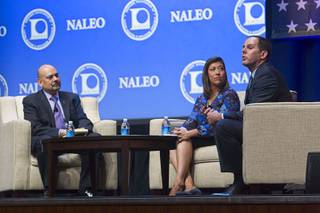
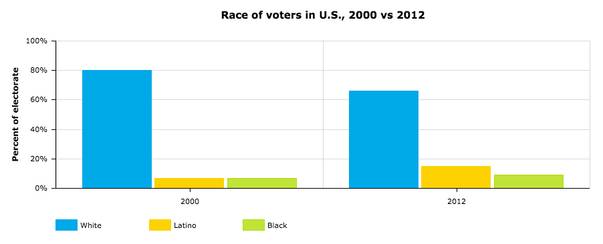
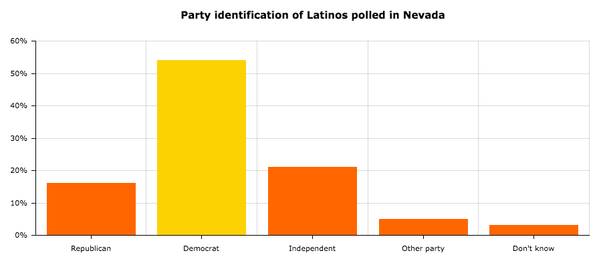
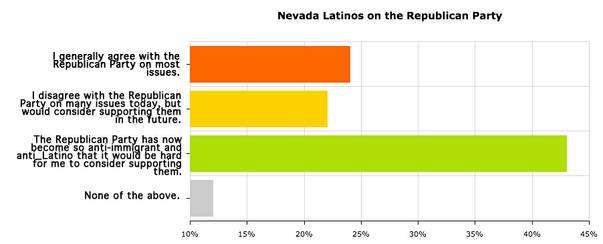
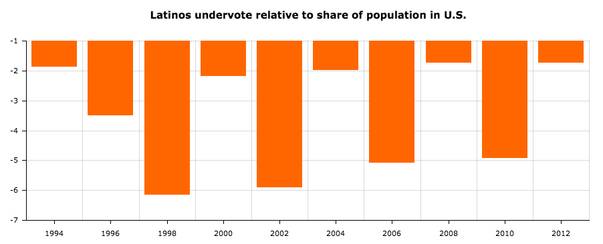
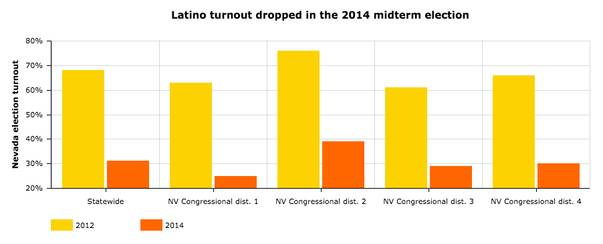

Join the Discussion:
Check this out for a full explanation of our conversion to the LiveFyre commenting system and instructions on how to sign up for an account.
Full comments policy